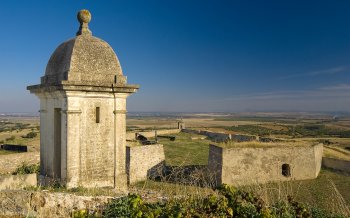Explore the best places
Monuments in Elvas
Igreja de São Domingos ou dos Domínicos
- heritage
Largo de São Domingos
7350-423, Elvas
This temple was founded in 1267 and it underwent several changes throughout the centuries. From the original church it only maintains the apse on the main chapel. It possesses a façade from the 17th century and the baroque portico, both are sided by angels. The interior has three naves and the lateral altars, from the 18th century, are made of marble.

Convento de Santa Clara
- heritage
Largo dos Terceiros
7350-238, Elvas
Religious monument of great simplicity. The side altarpiece has elements which attest to its Baroque aesthetic. Tiled flooring of the walls of the nave and the chancel deserves prominence. It's the only building that remains of the primitive convent of the Nuns of Santa Clara Xabreganas and was founded in 1526e Sunday of Sam Payo was the Carver.
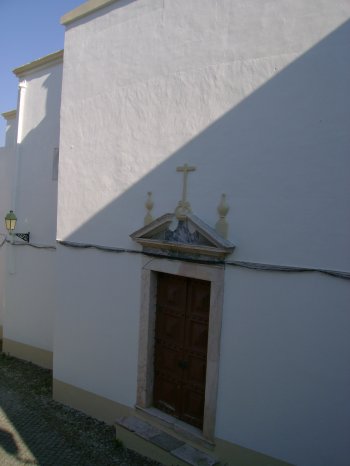
Ermida do Outeiro da Boa Fé
- heritage
São Vicente
7350-481, São Vicente
Chapel located one kilometre from St. Vincent, built in 1789, rural type and small dimensions. Stands out the aisle of the chancel in masonry.
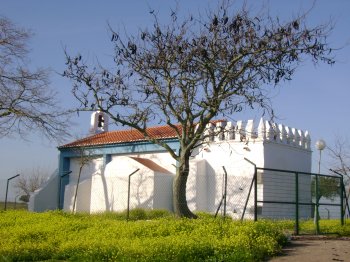
Igreja Paroquial de Santa Eulália
- heritage
Largo de Lobão Rasquilha
7350-451, Santa Eulália
This monument, founded in the 14th century, of religious character is distinguished primarily by its facade, to the extent that contained 2 bell towers and a terrace on the side. Comprises chorus, nave, chancel, baptismal Chapel, Sunday school room, Bell House, City Hall, vestry and meeting room. The interior is worthy of visitation, given the spoils that holds and preserves to this day,

Igreja Paroquial do Salvador / Antigo Colégio de Santiago de Elva
- heritage
Largo do Colégio
7350-018, Elvas
This Monument is composed by a church and by the former College from the Society of Jesus. The church is composed by a nave, four altarpieces chapels, low and straight main chapel and sacristy. On the inside it is worth to mention the main chapel, covered up in golden carving besides an inside filled with many beautiful and rich elements. The part which concerns the College is spread in two floors through four wings involving a yard which is the only remain part from the structure.

Capela de São Lourenço
- heritage
São Lourenço
7350, Elvas
Architecture of religious type, consisting of nave, chancel, baptismal Chapel and sacristy; very simple facade, with Bell Tower one was addressed by a Bell; shot at the base in yellow. Inside stands the confessional, the access to the baptismal Chapel, the holy water-circular sink in granite, with the blue-painted Cup and the niche of the main altarpiece with the image of s. Lourenço.
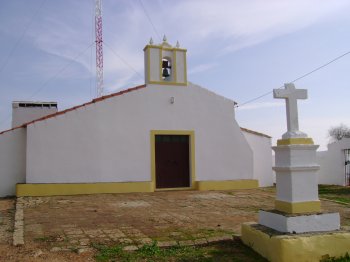
Capela de São Francisco
- heritage
Adro de São Francisco
7350-501, Vila Boim
Chapel built in 1722, in the existing niche surroundings would be added to the wall fernandina. The façade presents edges in shades of yellow. Above the door is a window surmounted by the cross of Christ of great simplicity. Next, the Bell Tower protects a Bell.
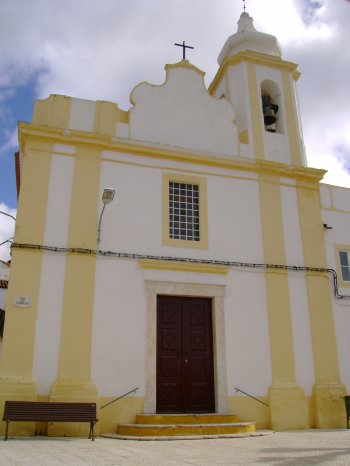
Santuário do Senhor Jesus da Piedade
- heritage
Avenida da Piedade
7350-094, Elvas
Architecture of religious type, large, example of one of the most symbolic monuments of the baroque of the reign of King John V, built in 1753. The Church today finds himself replaced a chapel. Include, among other elements, the tiles from the second half of the late 18th century that decorate the walls; inside, the two marble altars of various shades are another highlight. The pilgrimage of the Lord Jesus da Piedade happens every year around September 20, and lasts a week.

Quinta de São João
- heritage
São Vicente
7350-481, São Vicente
Located just eight miles from Elvas, this area of great beauty and architectural richness is ideal to rest and to enjoy moments of great tranquility, comfort, hospitality and good cooking, besides missing the recreational activities for all ages. A Fifth tour is essential, because it will find little treasures such as chapels, courtyards, fountains and lakes, vast gardens, balconies, among others secrets.
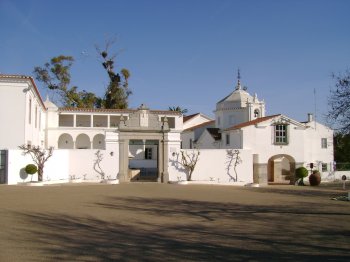
Forte de Santa Luzia
- heritage
Outeiro de Santa Luzia
7350, Elvas
Monument of military architecture, created by a number of names such as, by way of example, Martim Afonso de Melo, Hieronimo Rozetti, Lassart and Rui Correia Lucas. Your building model has inspired other forts. Today houses the military museum.
